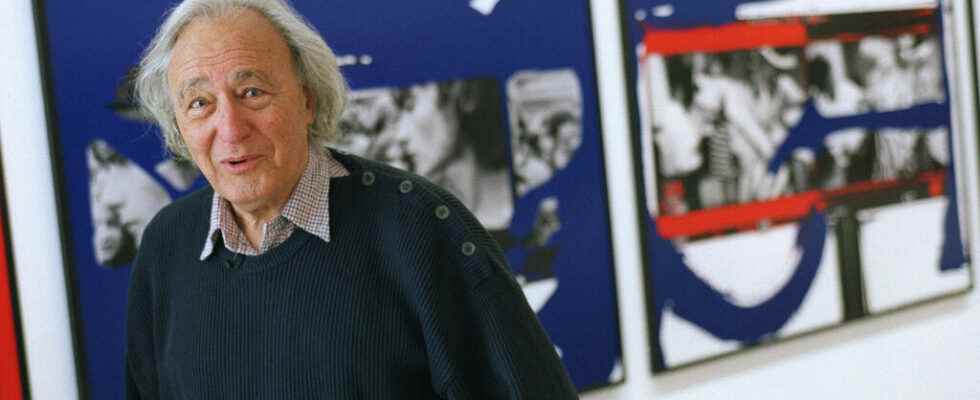The most famous of American photographers in Paris has influenced generations of photographers around the world. Saturday September 10, William Klein died “peacefully”, at the age of 96, in his favorite city, announced Monday September 12 his son, Pierre Klein.
Thanks to the audacity and freedom of his images, William Klein revolutionized 20th century photography. With him, the photographer leaves the role of the spectator to fully assume to be also actor of the image. Klein does not hesitate to paint his prints, to crop the contact sheets of his photos, to vary the angles, using blur, grain and limitless contrasts to even better confuse the viewer.
“Talking about life”
Until the end of his life, even in a wheelchair, he strolled through the exhibitions and the streets of Paris with his camera in his hand. Throughout his career, the use of his third eye was never limited to photography, because William Klein’s gaze and sensitivity were also expressed through cinema, painting and graphic design. ” Photography gave me the opportunity to talk about life. It was very exciting for me. Moreover, it allowed me to create books and much more. It all goes hand in hand he confided to us on the occasion of the major retrospective of his work in 2005, at the Center Pompidou. Indeed, the supreme talent of the American artist consists in bringing together in his photographic works all disciplines.
Klein had his own way of interrogating the power of the image and the problems inherent in the language of images using this particular medium called photography. Even architecture had a special place in the photographic art of this student of Fernand Léger who loved to participate in the design of spaces for his exhibitions:
” One of my goals has always been to work with architects. Strangely, this was already the case at the very beginning. Shortly after my time in Léger’s studio, I had the opportunity to paint murals in Italy. And for the exhibition at the Center Pompidou, I said to myself: given that these painted contact sheets can now be made in any size, one possibility of use is to integrate them into the public space. »
Art as an escape
He was born into an Orthodox Jewish family of Hungarian origin on April 19, 1928, in New York, Manhattan. His parents are poor, the neighborhood disreputable. Art then served as an escape. William Klein sets foot for the first time on the European continent after the Second World War. Demobilized, he found himself at the age of 18 in Paris, the cultural capital of the world, and then chose to devote himself to painting, which finally led him to engage in photography.
In 1956 he published Life Is Good and Good For You In New York: Trance Witness Reveals, a plunge into consumerism and American violence, the opposite of the American dream. After this punch book (which all publishers in the United States refuse to publish), nothing was like before. His photos show the world unvarnished, from an unusual perspective and with the courage of blur and cut characters, all enriched with words from advertising. Fellini is impressed and hires him, Pasolini writes the text of the photo book on Rome.
Variations on the immortalized moment
He tours with Jean-Luc Godard and Louis Malle. In 1956, his first film, broadway by light, made him the first pop filmmaker. As a fashion photographer, he brings models out of the studio to show them on the street. His photographs are transformed into variations on the immortalized moment, like this wedding photo for a friend, which could go down in history as an icon of modern Paris: a white bride with a black groom and a black community around it.
In the aesthetics, as experimental as it is everyday, which is specific to him, the spectator always finds a touch of irony or violence. And if necessary, William Klein always resorted to posing: Gun 1, his cult photo taken in 1954 in New York of a hate-faced boy pointing a gun at us, the onlooker, goes around the world as a symbol of violent youth. At the time, Klein protested for a long time, because, in fact, he simply asked the boy to play the bad guy for him. Proof that even the best photographer is not immune to his own shot.
